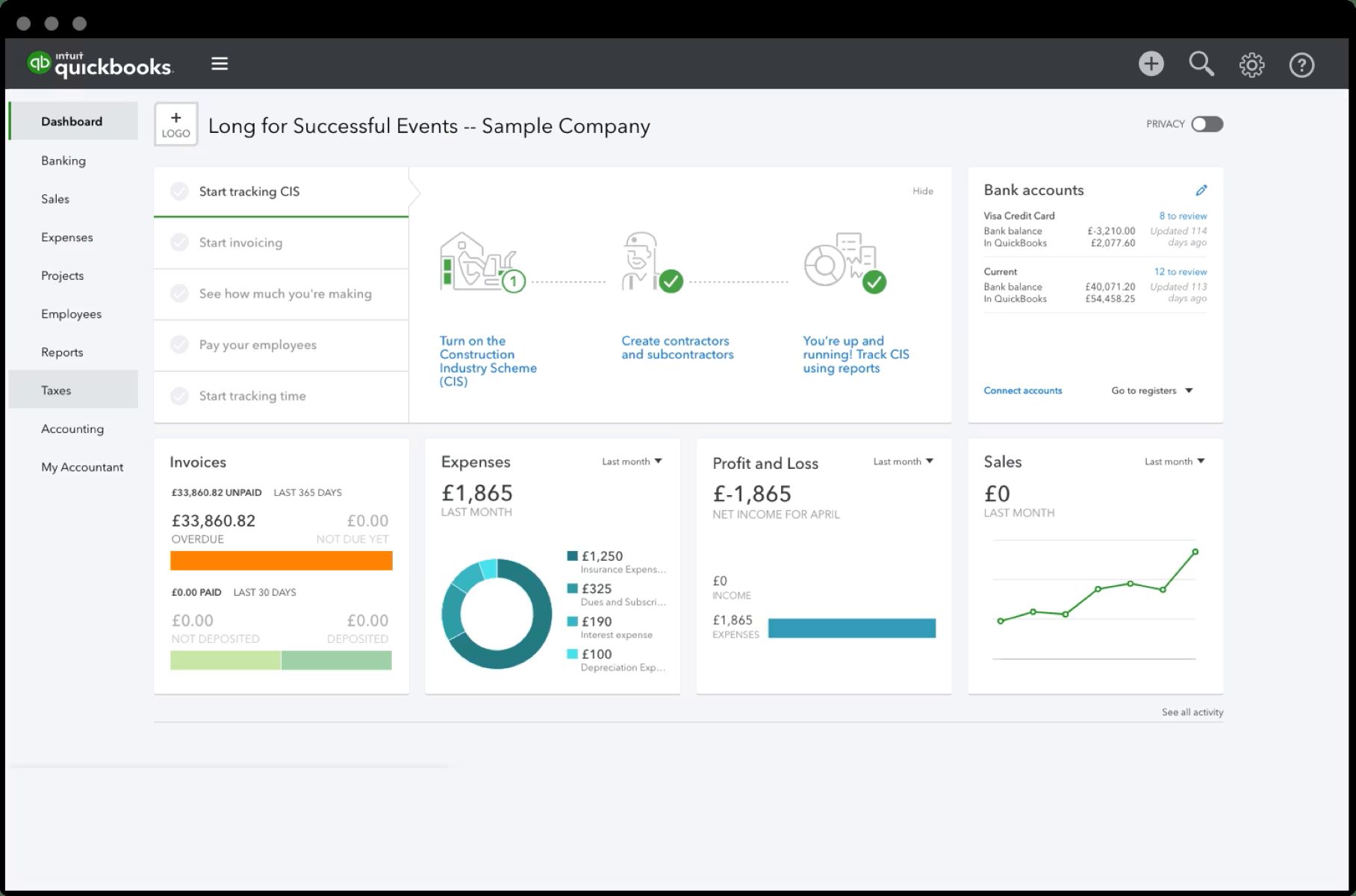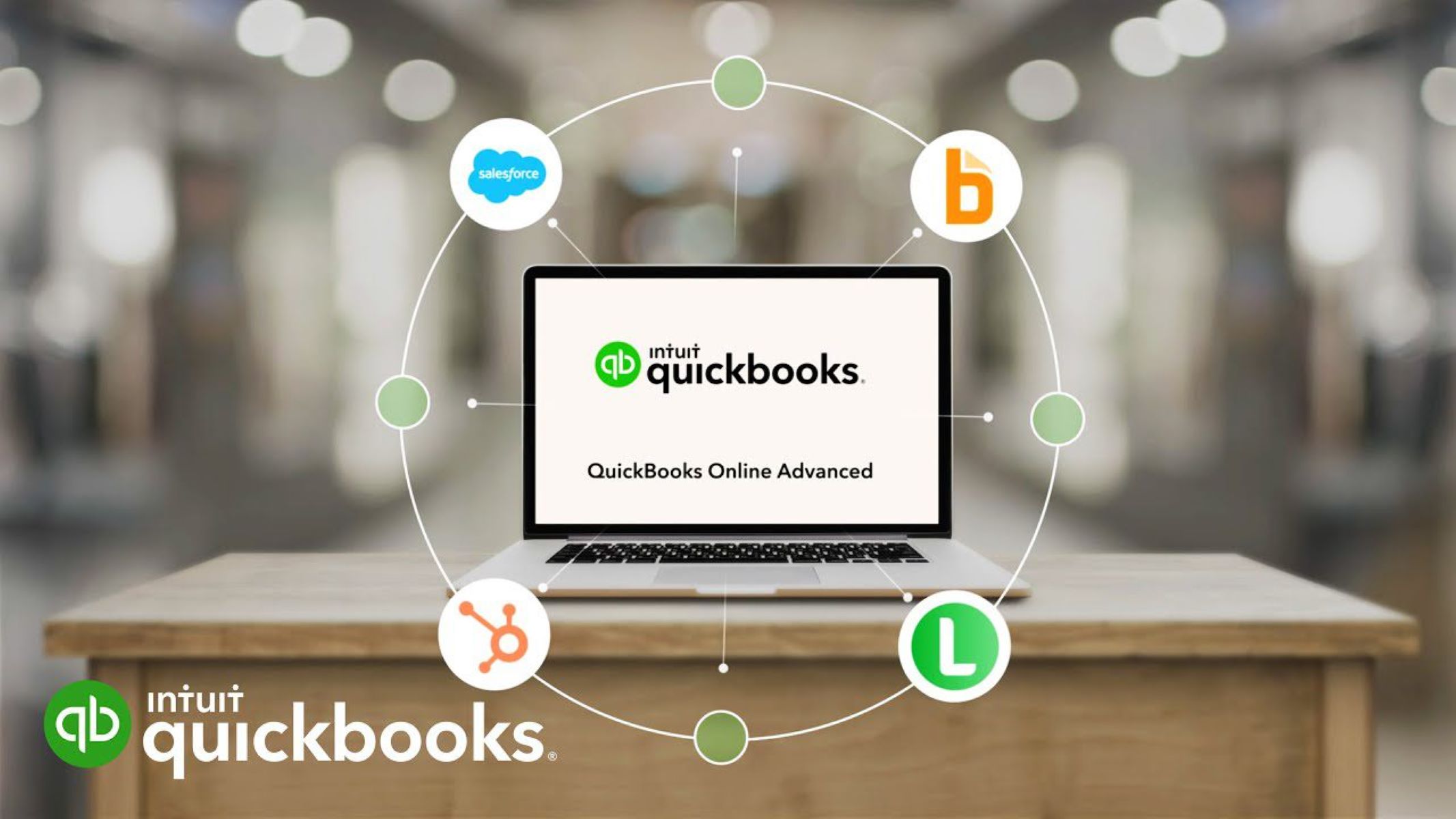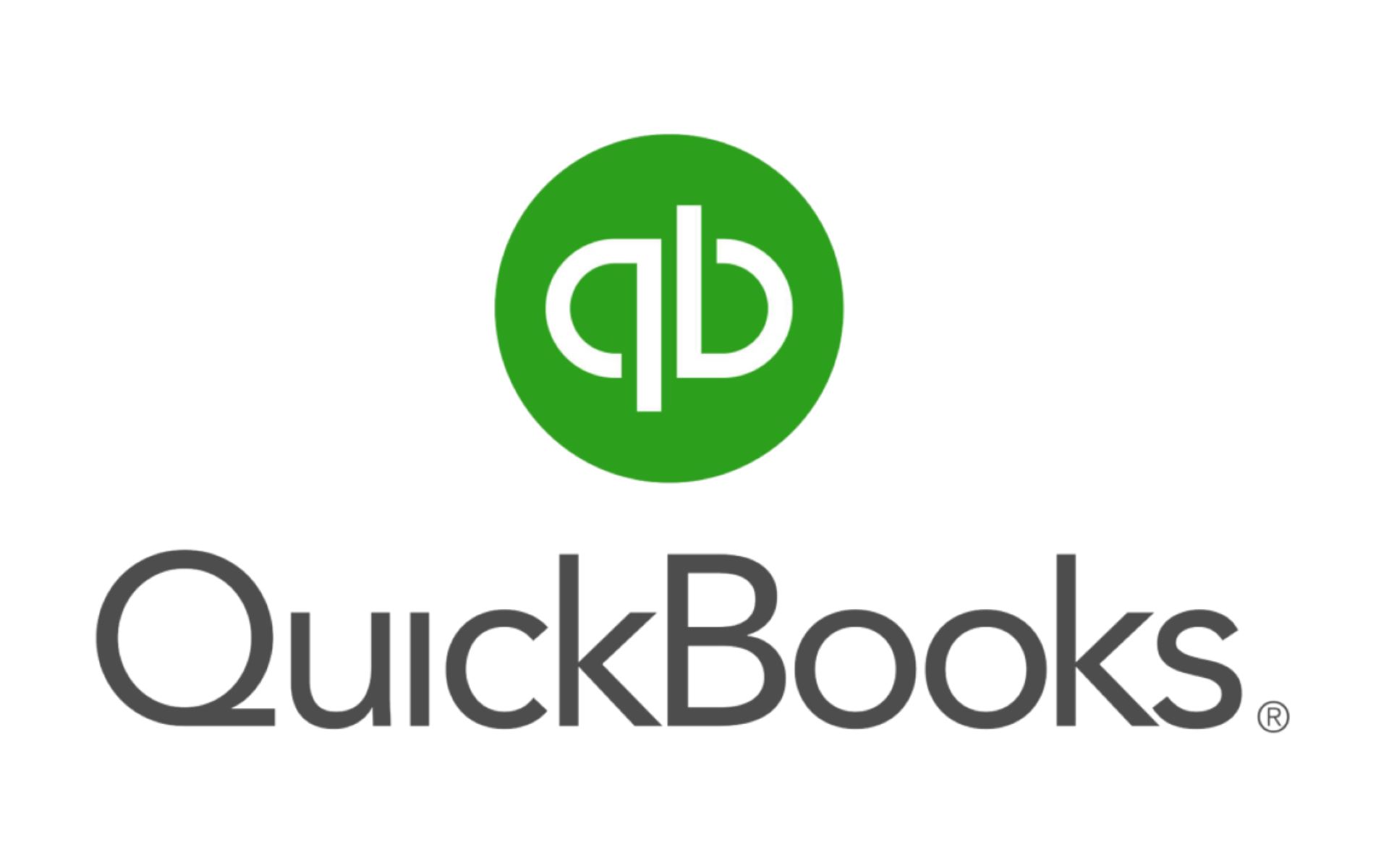Introduction
Welcome to the world of QuickBooks Online! If you’re a business owner or an accountant looking to streamline your accounting processes, QuickBooks Online is the perfect solution for you. Adding a new company to QuickBooks Online is a straightforward process that allows you to easily manage financial transactions, generate reports, and stay organized.
In this guide, we will walk you through the step-by-step process of adding a new company to QuickBooks Online. Whether you’re starting a new business or transitioning from another accounting software, QuickBooks Online offers the tools and features to help you effectively manage your company’s finances.
Before we dive into the steps, it’s important to note that QuickBooks Online is a web-based software, which means you can access your company’s financial data from anywhere, at any time. You don’t need to install any software on your computer, and you can easily collaborate with your team or accountant by granting them access to your company file.
Now, let’s get started with adding a new company to QuickBooks Online. Whether you’re a small business owner or a seasoned accountant, this guide will help you get your new company up and running on QuickBooks Online in no time.
Step 1: Access the QuickBooks Online Dashboard
The first step to adding a new company in QuickBooks Online is to access the QuickBooks Online dashboard. To do this, log in to your QuickBooks Online account using your username and password. If you don’t have an account yet, you can easily create one by signing up on the QuickBooks Online website.
Once you’ve logged in, you’ll be taken to the QuickBooks Online dashboard, which serves as the central hub for managing your company’s financial data. From here, you can access various features and tools to help you effectively organize and track your company’s finances.
The dashboard provides an overview of your company’s financial health, including a snapshot of your income, expenses, and profit. You can quickly view important financial metrics, such as bank account balances, outstanding invoices, and upcoming bills.
Additionally, the dashboard allows you to access other important sections of QuickBooks Online, such as the sales, expenses, and banking sections. These sections provide in-depth insights into your company’s financial transactions and allow you to easily manage and categorize them.
It’s important to familiarize yourself with the QuickBooks Online dashboard as you’ll be spending a significant amount of time here managing your company’s financial data. Take the time to explore the various features and options available to you to make the most of your experience with QuickBooks Online.
Now that you’ve accessed the QuickBooks Online dashboard, you’re ready to proceed to the next step of adding a new company to QuickBooks Online.
Step 2: Click on “Add a company”
Once you’re on the QuickBooks Online dashboard, the next step is to click on the “Add a company” button. This will initiate the process of adding a new company to your QuickBooks Online account.
To find the “Add a company” button, look for the navigation menu on the left side of the dashboard. It is usually represented by three horizontal lines or a small icon. Click on this button to expand the menu and reveal the options.
Scroll down the menu and locate the “Settings” section. Within this section, you’ll find the “Add a company” option. Click on it to proceed.
After clicking on “Add a company,” QuickBooks Online will guide you through the process of setting up your new company. You may be prompted to provide some basic information about your company, such as the company name, industry, and address.
It’s important to enter accurate information during this step as it will help QuickBooks Online tailor the accounting settings and features to your specific business needs. Additionally, this information will be used for generating financial reports and invoices, so it’s crucial to provide correct details.
Once you’ve entered the required information, click on the “Next” or “Continue” button to proceed to the next step. QuickBooks Online will then prompt you to select the type of entity for your company, such as a sole proprietorship, partnership, or corporation. Choose the appropriate option that best matches your company’s structure.
After selecting the entity type, you may be asked to provide more specific information related to your business structure. This is to ensure that QuickBooks Online can set up the necessary accounting settings and features that align with your legal and tax obligations.
Once you’ve provided all the required information and made the necessary selections, click on the “Next” or “Continue” button to move on to the next step of adding a new company to QuickBooks Online.
Step 3: Choose the company type
After entering the basic information about your new company, the next step is to choose the company type in QuickBooks Online. This step ensures that the accounting settings and features are customized based on your specific business needs.
When choosing the company type, you’ll have a range of options to select from, including a sole proprietorship, partnership, corporation, nonprofit, and more. The company type is determined by your legal structure and will impact how you report your financial information.
To select the company type, follow the prompts on the screen or navigate to the appropriate section within QuickBooks Online. You may be asked to provide additional details about your company’s structure or industry during this step.
It’s important to choose the correct company type as it affects how your financial reports are generated and how taxes are calculated. Each company type has its own accounting requirements and compliance obligations, so make sure to select the one that best aligns with your business structure.
If you’re unsure about which company type to choose, consult with your accountant or business advisor. They can provide guidance based on your unique circumstances and legal requirements.
Once you’ve selected the company type and provided any additional information requested, click on the “Next” or “Continue” button to proceed to the next step of adding a new company in QuickBooks Online.
Step 4: Enter the company’s information
After choosing the company type, the next step in adding a new company to QuickBooks Online is to enter the company’s information. This step involves providing more detailed information about your company, such as the fiscal year, industry, and business address.
Start by entering the fiscal year of your company. The fiscal year is the period for which you will be reporting your financial information. It can vary depending on your company’s accounting practices and legal requirements. Choose the start and end dates for your fiscal year based on your specific needs.
Next, you’ll have the option to select the industry in which your company operates. This selection helps QuickBooks Online customize the available features and settings to better suit your industry’s specific accounting needs. Choose the industry that closely aligns with your business.
Furthermore, you’ll need to provide your company’s address. This includes the physical address where your business is located. It’s important to accurately enter this information, as it will be used for generating invoices, financial statements, and other reports.
Depending on your business structure and location, you may also be required to enter additional details like your employer identification number (EIN) or tax identification number (TIN). These numbers are used for tax purposes and may vary based on your country’s regulations.
Take your time to carefully enter all the required information, ensuring its accuracy and completeness. This will ensure that your financial records in QuickBooks Online are generated correctly and help you avoid any discrepancies or errors.
Once you’ve entered all the necessary information, click on the “Next” or “Continue” button to proceed to the next step of adding a new company in QuickBooks Online.
Step 5: Customize the company settings
After entering the basic information about your company, the next step is to customize the company settings in QuickBooks Online. Customizing these settings ensures that QuickBooks Online is tailored to your specific business needs and preferences.
Start by setting up your company’s chart of accounts. The chart of accounts is a list of all the accounts that your company uses to track its financial transactions. It includes categories such as assets, liabilities, income, and expenses. Customize the chart of accounts to match your company’s unique financial structure.
Next, you can customize the invoice and sales settings. This includes setting your invoice template, adding your company’s logo, and specifying the payment terms and methods for your customers. Take the time to create a professional-looking invoice template that accurately reflects your brand.
Furthermore, you can configure the expense settings in QuickBooks Online. This includes setting up expense categories and subcategories that align with your company’s spending habits. By categorizing your expenses, you’ll have a better understanding of where your money is being allocated.
QuickBooks Online also allows you to customize various other settings, such as the sales tax settings, payroll settings, and banking settings. Depending on your business needs, you can enable or disable these features and customize them according to your preferences.
Take advantage of the customization options available in QuickBooks Online to tailor the software to your company’s specific needs. By customizing the settings, you can streamline your accounting processes and ensure that QuickBooks Online functions in a way that best supports your business operations.
Once you’ve customized the company settings to your satisfaction, click on the “Next” or “Continue” button to move on to the next step of adding a new company in QuickBooks Online.
Step 6: Set up bank accounts and link them to QuickBooks
Setting up bank accounts in QuickBooks Online is an essential step to accurately track your company’s financial transactions. By linking your bank accounts to QuickBooks Online, you can easily import and categorize your bank transactions, saving you time and reducing manual data entry.
To set up your bank accounts, navigate to the banking section within QuickBooks Online. Look for the option to connect your bank accounts or add a new bank account. Click on this option to get started.
Depending on your bank, you may have different options for connecting your accounts. QuickBooks Online offers various methods, such as entering your bank login credentials or using account numbers and routing numbers to connect manually.
After selecting the appropriate connection method, follow the prompts to complete the setup process. You may need to provide additional information or authorize QuickBooks Online to access your bank account data.
Once your bank accounts are connected, QuickBooks Online will start pulling in your bank transactions. It’s important to review and categorize these transactions to ensure accurate financial reporting and tracking.
QuickBooks Online offers convenient tools to help you categorize your transactions effectively. You can create rules to automatically categorize certain transactions, set up recurring transactions, and manually categorize transactions as they come in.
In addition to bank accounts, you can also set up credit card accounts, PayPal accounts, and other financial accounts that your company uses. By linking all your accounts to QuickBooks Online, you’ll have a comprehensive view of your company’s financial health and be able to generate accurate financial reports.
Remember to regularly reconcile your bank accounts in QuickBooks Online to ensure that your records match your bank statements. Reconciliation helps identify any discrepancies or errors that need to be resolved.
Once you’ve set up and linked your bank accounts in QuickBooks Online, you’re ready to move on to the next step and import any existing data from your previous accounting software if applicable.
Step 7: Import data from a previous accounting software
If you’re transitioning from a previous accounting software to QuickBooks Online, you can easily import your existing data to seamlessly continue managing your company’s finances. QuickBooks Online provides tools to import data, such as customer information, vendor details, chart of accounts, and transaction history.
To import your data, start by exporting the necessary data from your previous accounting software. Most accounting software allows you to export data in formats such as CSV (comma-separated values) or Excel spreadsheets.
Once you have the exported data, navigate to the import section within QuickBooks Online. Look for the option to import data or set up a new company. Click on this option to proceed with the import process.
Select the type of data you want to import, such as customers, vendors, or transactions, and follow the prompts to upload the exported file. QuickBooks Online will guide you through the mapping process, where you match the fields in your exported file to the corresponding fields in QuickBooks Online.
During the mapping process, ensure that the data is correctly aligned with the appropriate fields in QuickBooks Online. This ensures that your imported data is accurately represented in the system.
Once the mapping is complete, review the imported data to ensure its accuracy. Check for any errors or missing information that may need to be addressed. QuickBooks Online provides tools to edit and modify the imported data, so you can make any necessary adjustments.
Importing data from your previous accounting software allows you to continue working with the historical information and ensures a smooth transition to QuickBooks Online. It saves time on manual data entry and provides a comprehensive view of your company’s financial history.
Remember to thoroughly review the imported data and reconcile it with your bank statements and other financial records. This will help identify any discrepancies or errors that need to be resolved.
With your data imported, you’re ready to move on to the next step of reviewing and confirming the company details before starting to use QuickBooks Online for your new company.
Step 8: Review and confirm the company details
Before fully utilizing QuickBooks Online for your new company, it’s crucial to review and confirm all the company details to ensure accuracy and completeness. This step allows you to double-check the information you provided during the setup process and make any necessary adjustments.
Start by reviewing the company information, such as the company name, address, and contact details. Verify that all the information is correct and up to date. If you need to make changes, you can easily edit the company details within the settings section of QuickBooks Online.
Next, review the company’s chart of accounts. Ensure that all the accounts are labeled correctly and properly categorized. If you need to add or modify any accounts, you can do so within the chart of accounts settings. This step is essential for accurate financial reporting and tracking.
Take the time to review other settings, such as the invoice and sales settings, expense settings, and tax settings. Ensure that these settings align with your specific business needs and preferences. Make any adjustments as necessary to ensure smooth accounting operations.
If you have linked your bank accounts or other financial accounts, review the connections and ensure that they are functioning properly. Check that the transactions are importing correctly and that the bank balances match your actual accounts.
After reviewing all the settings and details, it’s important to confirm that everything is accurate and complete. Verify that all the information aligns with your business requirements and financial records.
If you need assistance or have any questions during this step, don’t hesitate to reach out to QuickBooks Online support or consult with your accountant. They can provide guidance and ensure that your company details are configured accurately in QuickBooks Online.
Once you have reviewed and confirmed all the company details, you’re ready to start using QuickBooks Online for your new company. Take the final step and begin exploring the features, entering transactions, and utilizing the powerful tools that QuickBooks Online offers.
Step 9: Start using QuickBooks Online for the new company
Congratulations! You have now added your new company to QuickBooks Online and completed all the necessary setup steps. It’s time to start using QuickBooks Online to effectively manage your company’s finances and streamline your accounting processes.
Begin by familiarizing yourself with the QuickBooks Online interface and navigation. Take the time to explore the different sections, such as sales, expenses, banking, and reports. Each section provides valuable tools and features to help you stay organized and gain insights into your company’s financial health.
Start by entering your transactions into QuickBooks Online. This includes recording sales, entering expenses, and managing your bank account transactions. You can easily create invoices, record payments, track expenses, and reconcile your bank accounts directly within the software.
Take advantage of QuickBooks Online’s automation features to save time and reduce manual data entry. Set up recurring transactions for regular expenses or income. Utilize the bank feeds feature to automatically import and categorize your bank transactions.
Generate reports in QuickBooks Online to gain valuable insights into your company’s financial performance. View profit and loss statements, balance sheets, cash flow statements, and more at the click of a button. Customize your reports to focus on specific time periods or areas of interest.
Collaborate with your team or accountant by granting them access to your QuickBooks Online company file. You can set different user roles and permissions to ensure the privacy and security of your financial data while allowing others to assist in managing your company’s finances.
As you use QuickBooks Online for your new company, regularly review and reconcile your financial records. This helps maintain accuracy and ensures that your books are up to date. Keep an eye on your financial reports to monitor your company’s financial health and identify areas for improvement.
Whenever you encounter questions or need assistance, take advantage of the resources available to you. QuickBooks Online provides comprehensive support materials, including tutorials, guides, and a user community. Additionally, you can reach out to QuickBooks Online support for personalized assistance.
By harnessing the power of QuickBooks Online, you can effectively manage your company’s finances, save time on administrative tasks, and gain valuable insights into your business’s financial performance. Stay proactive in utilizing the features and tools available to you, and continue to optimize your financial processes with QuickBooks Online.
Conclusion
Adding a new company to QuickBooks Online is a straightforward process that allows you to efficiently manage your company’s finances and streamline your accounting tasks. Throughout the steps outlined in this guide, you’ve learned how to access the QuickBooks Online dashboard, add a new company, choose the company type, enter the company’s information, customize the company settings, set up bank accounts, import data from a previous accounting software, review and confirm the company details, and finally start using QuickBooks Online for your new company.
By using QuickBooks Online, you have access to a wide range of features and tools that can help you effectively track income and expenses, generate financial reports, and stay organized. Plus, the ability to link your bank accounts and import data from a previous accounting software simplifies the process and ensures accuracy.
Remember to regularly review and reconcile your financial records, customize settings to align with your business needs, and take advantage of QuickBooks Online’s automation features to save time on manual tasks.
If you encounter any challenges or have questions along the way, utilize the resources available to you, such as the QuickBooks Online support materials and assistance from the QuickBooks Online support team.
Now that you have successfully added your new company to QuickBooks Online, you can focus on managing your company’s finances more efficiently, making informed business decisions, and driving your company’s growth and success.

























